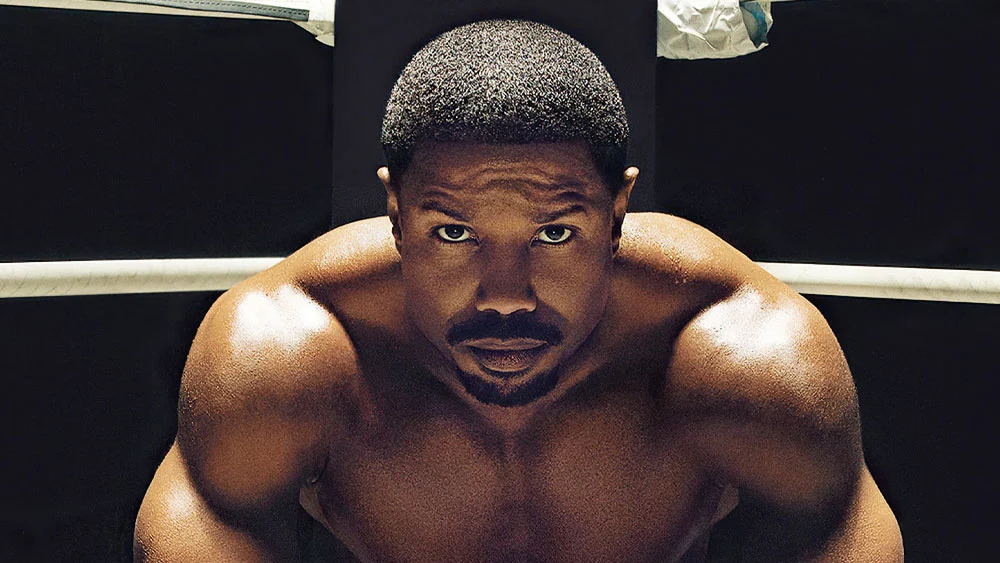
By: Torrence Phillips
Creed III serves as a powerful and introspective conclusion to the series, reimagining the themes central to the Rocky legacy through a unique Black American perspective. As the African proverb states, “When the roots are deep, there is no reason to fear the wind.” This wisdom rings true within the film as it delves into the depths of personal struggle, resilience, and the unbreakable bonds of legacy and family.
A poignant exploration of masculinity and vulnerability, Creed III addresses the male ego and the unwillingness to confront personal traumas. Although these issues are not specific to the Black community, they are prevalent within it; however, the movie remains accessible to all audiences. The protagonist and antagonist, each grappling with their emotional scars, project their unresolved pain onto others. These complex characters reflect the broader themes of fatherhood and the lasting impact of abuse on the life trajectories of young boys. By exploring these issues, the film underscores the importance of reconciling the path we walk with the path we plan, finding a balance between our past, present, and future.
According to the Association of Black Psychologists, Black Americans, particularly men, are less likely to receive mental health care than their white counterparts. Mental health stigma and lack of access to culturally competent mental health care providers are significant barriers to addressing mental health disparities among Black men. Creed III offers a unique opportunity to start a conversation around these critical issues, showcasing the importance of acknowledging and addressing mental health concerns. The film serves as a reminder that accepting therapy and other forms of support should be normalized, particularly within the Black community, to promote overall well-being and healing.
The female characters play a significant role in the film as well, with Adonis’ wife, Bianca, exemplifying resilience and adaptability. Faced with a personal challenge that alters her career path, Bianca finds a way to channel her creative energy in a new direction. This transformation serves as a powerful reminder that obstacles can become opportunities for growth and self-discovery, as the saying goes, “turn your scars into stars.”
The couple’s daughter, Amara, plays an essential role in Adonis’ development throughout the movie. Her presence serves as a driving force for him to confront his own traumas and insecurities. By witnessing his daughter’s vulnerability and unconditional love, Adonis gains the strength and perspective necessary to overcome his personal challenges.
Mary Anne’s character (Adonis’ mother and the widow of Apollo Creed) highlights the strength and resilience of Black women who face adversity and loss while providing love, wisdom, and support to their families. As a guiding force in Adonis’ life, she helps him understand the pressures of his boxing legacy and that the past doesn’t define one’s future. The film emphasizes the importance of confronting the past and embracing vulnerability to forge one’s own path in life. This portrayal in Creed III contributes to the overarching theme of resilience within the Black community and adds richness to the narrative, making it even more impactful and relatable.
The cinematography and direction of Creed III are nothing short of masterful. The pivotal fight sequence in Creed III showcases brilliant visual storytelling, drawing inspiration from renowned Black photographers Gordon Parks and Carrie Mae Weems. By stripping away the audience, color, and fanfare, the scene becomes a raw, intimate portrayal of two men confronting each other and their innermost truths. Parks’ striking images, which documented the civil rights movement and figures like Muhammad Ali, serve as a fitting inspiration for the intensity and power of the sequence. Similarly, Weems’ monochromatic photography exploring identity, family, and the African American experience adds depth to Creed III’s visual narrative.
This minimalist approach, reminiscent of Parks’ and Weems’ monochromatic styles, allows the viewer to focus on the physical and emotional struggle, making the sequence all the more compelling and unforgettable. By drawing on the works of these influential artists, Michael B. Jordon creates a visually stunning tribute to the resilience and strength of the Black American experience.
As the denouement to the Creed series, the film culminates in a powerful moment of acceptance and self-realization. Both the protagonist and antagonist achieve their dreams, in part due to their ability to face their traumas and embrace their own paths. The story of Creed III transcends the ring, offering a timely and relevant exploration of the Black American experience, fatherhood, and the value of confronting our own demons. Creed III is a masterful finale to the series, seamlessly weaving themes of legacy, resilience, family, and self-reconciliation through a Black American lens. It is not only a fitting tribute to the iconic Rocky franchise but also a timeless exploration of the human spirit and the power of confronting our past to forge a better future. This final chapter leaves an indelible mark on audiences, serving as a poignant reminder that the fight within is just as important as the fight outside the ring.

